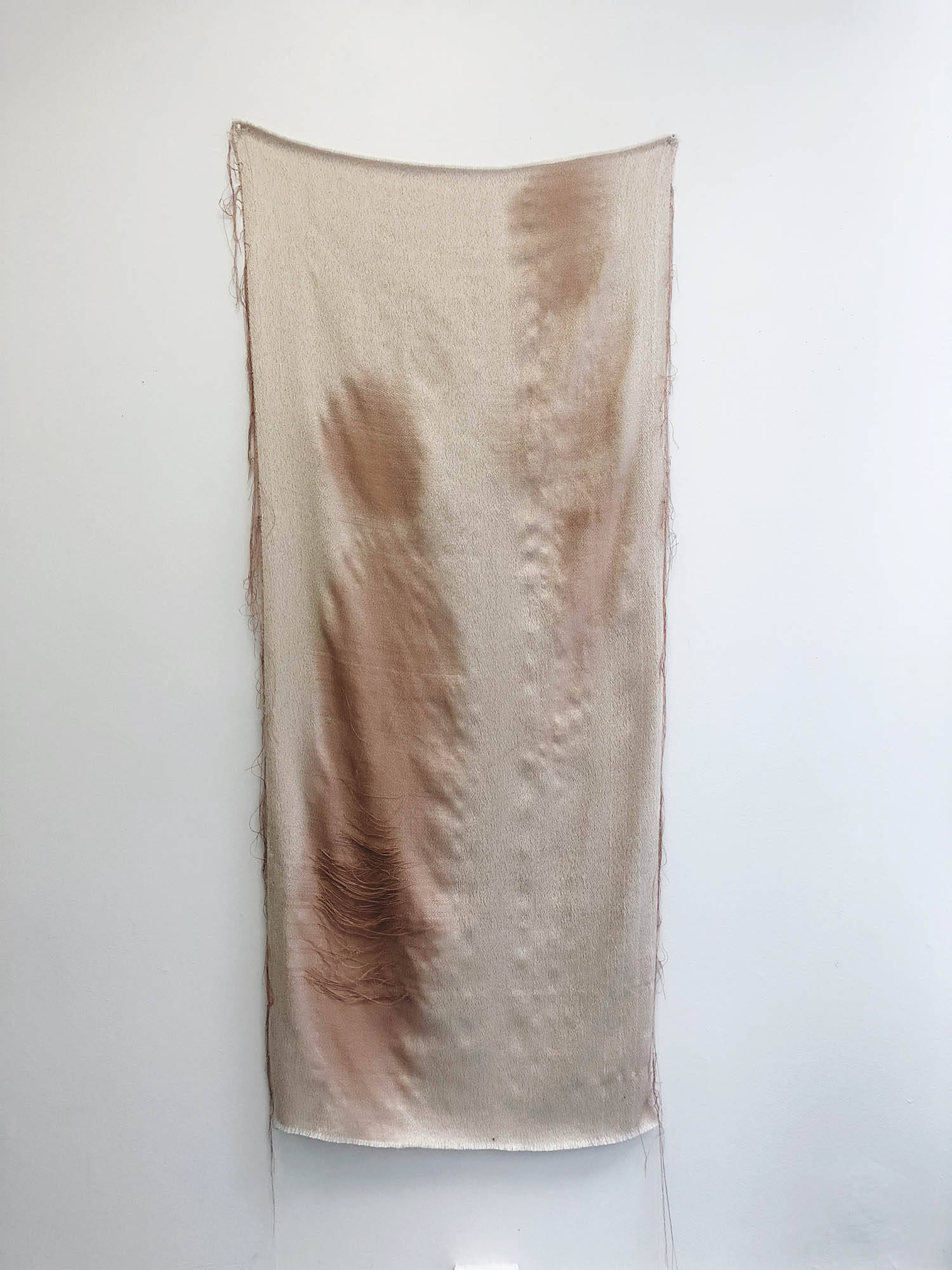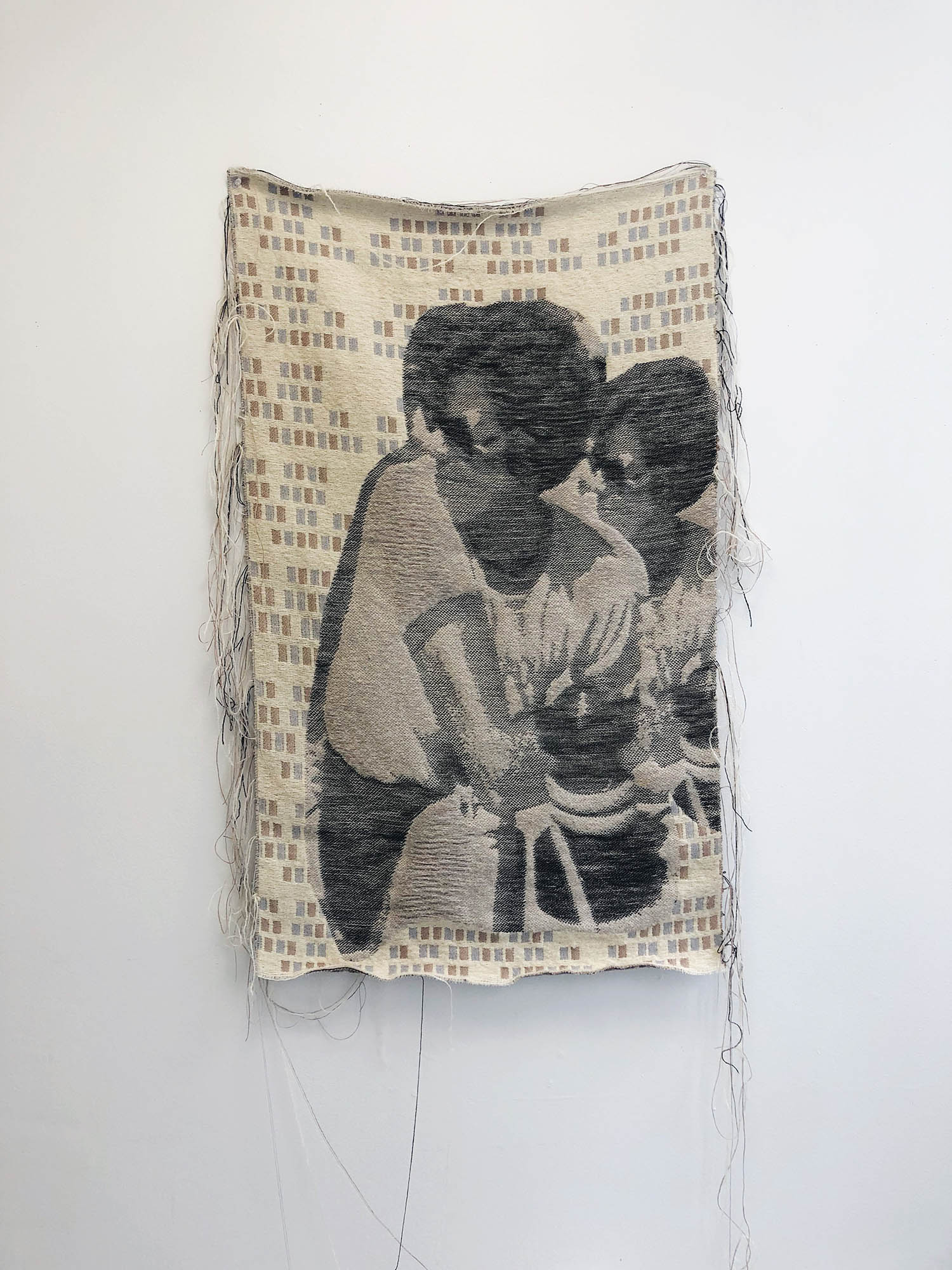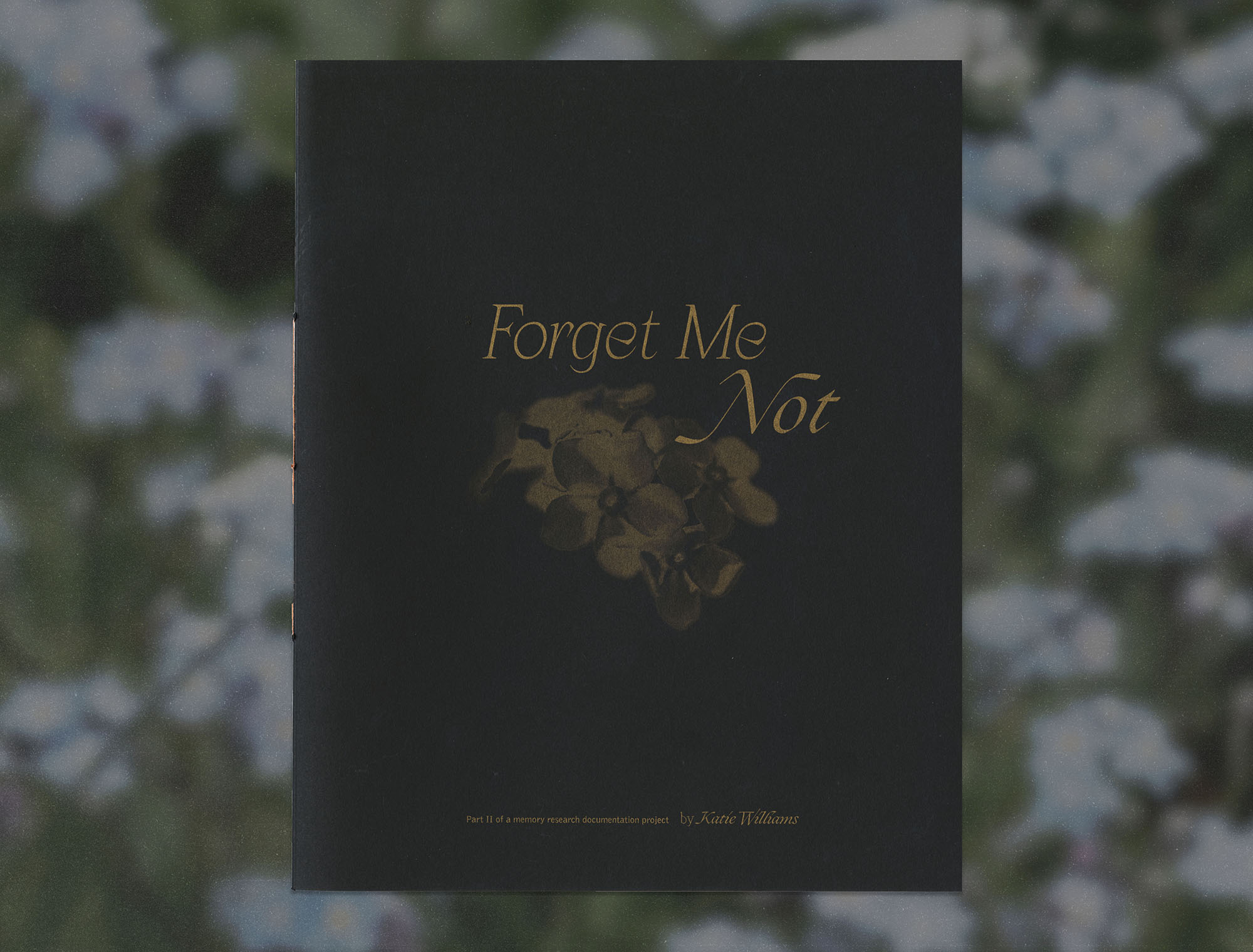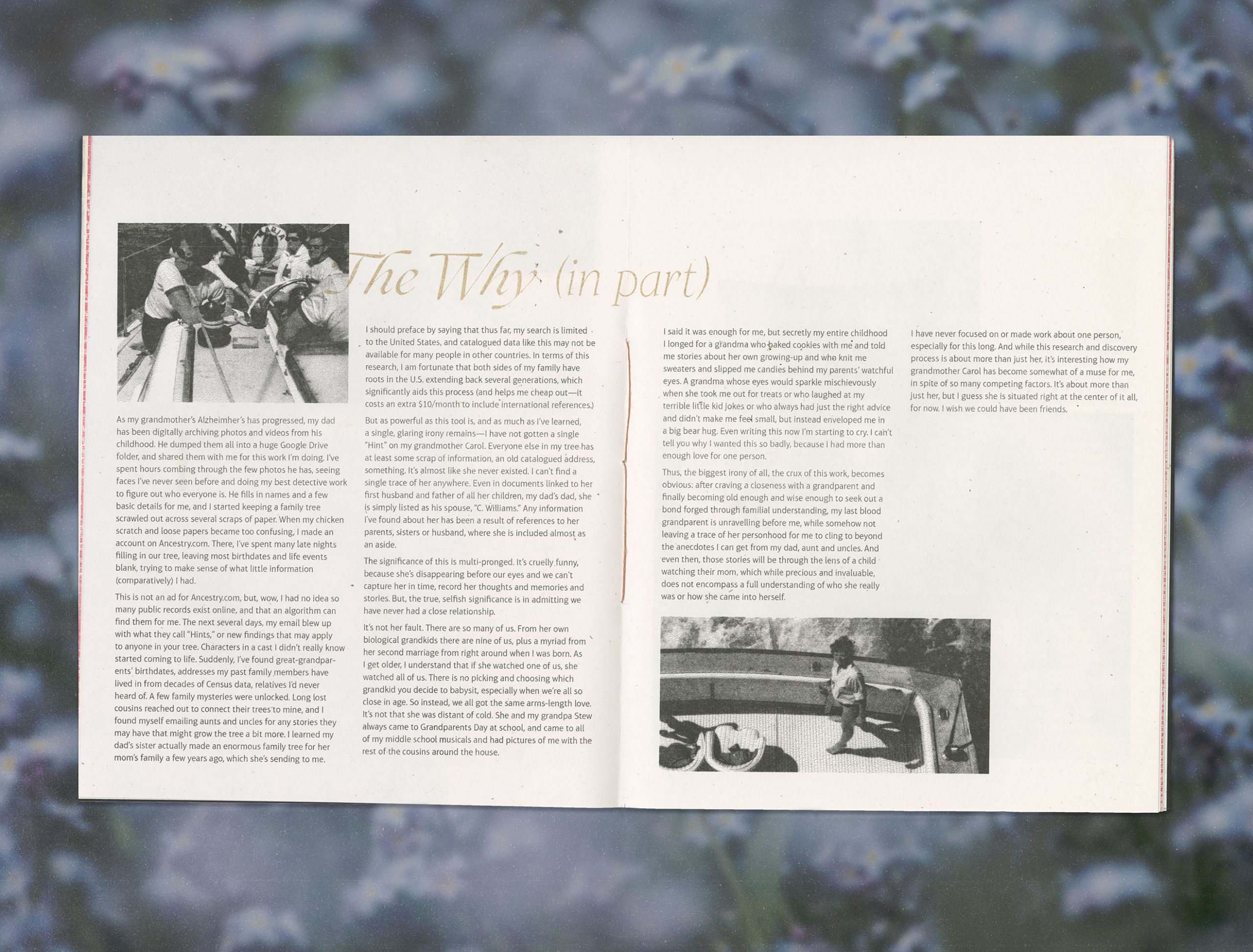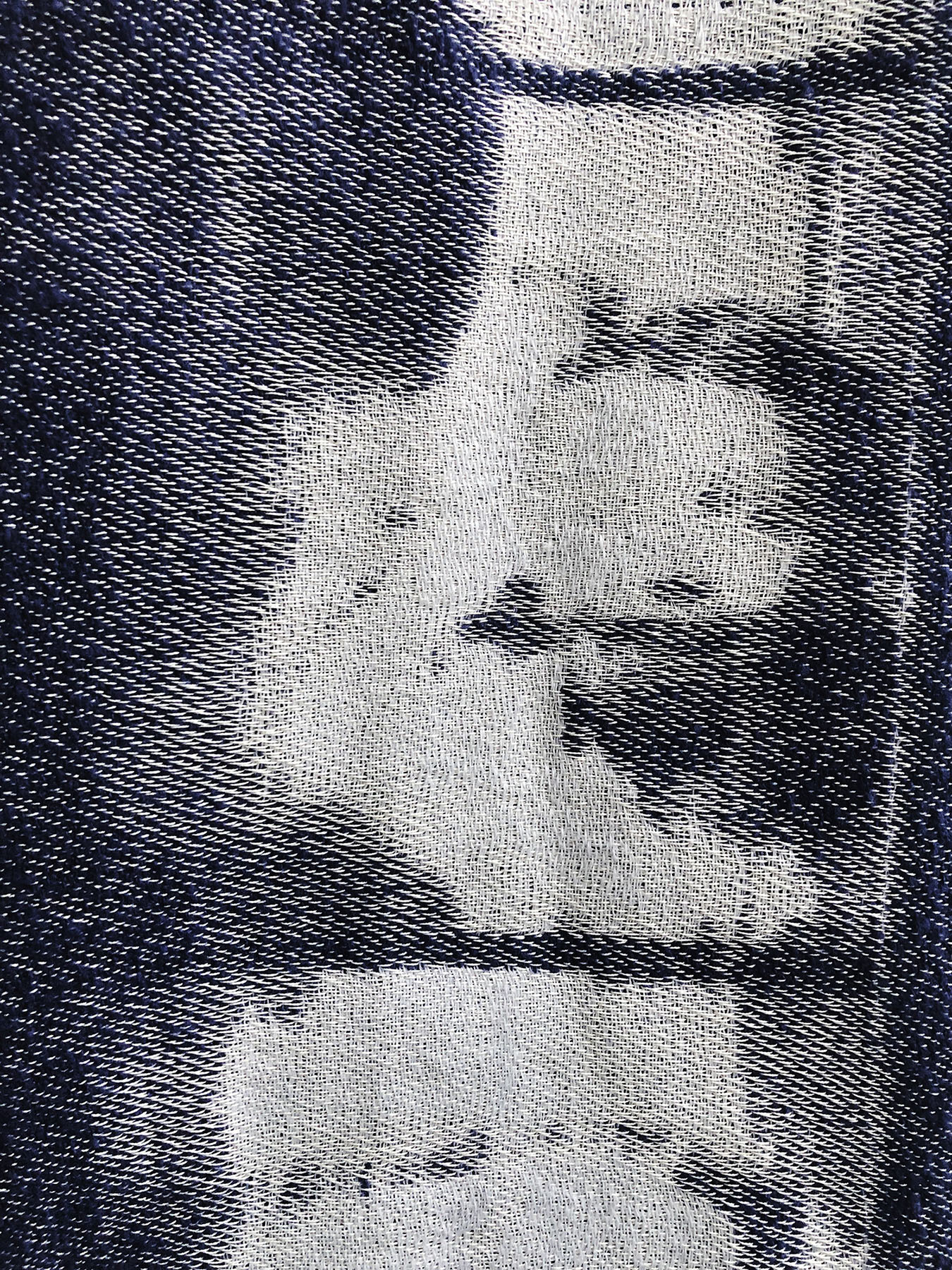My practice is that of an emotive archivist—I preserve fading personal history through the intentionally meditative labor or weaving, researching, designing, and writing. I interrogate memory, portrait, archive, and heirloom to reach intimate selfhood.
My recent work explores the question: what does it mean to know another? I finally attempt to get to know my grandmother as her Alzheimer’s disease progresses. I assume the roles of historian and anthropologist as I document our family’s history. I confront the disease’s genetic power and the high probability of its dormant presence in my father and in myself. Through collecting public records, saved correspondence, personal photographs, and oral history, I create the first archive for our family. These items direct the composition and form of my resulting body of work.
I have turned to weaving as both an archival tool and as remembrance embodied. Threads hold a physical history, illustrating a former life in their form. I leave the edges of my weavings unhemmed, allowing the yarns to slowly unravel over time and highlight kinks from their previously woven position. As a material, cloth is one of many categories of heirloom. I weave these pieces with the intention of generational sharing, as the first heirlooms in our family, as well as a physical, time-based documentation of my grandmother’s life and our budding relationship.
In the presence of nearly guaranteed memory loss, my work asks, how does an archive function when its users no longer identify with it? Is it possible to get to know a person who is no longer accessible? And, finally, what do we remember when we remember us?
